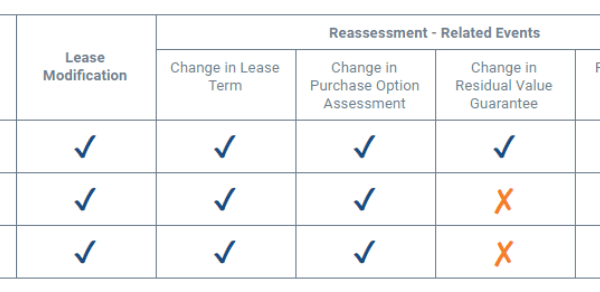This post originally appeared on Marketplace Advertiser, Connected Real Estate Magazine and is republished with permission. Find out how to syndicate your content with theBrokerList.
console.debug(‘TRINITY_WP’, ‘Skip player from rendering’, ‘is single: , is main loop: 1, is main query: 1’);console.debug(‘TRINITY_WP’, ‘trinity_content_filter’);
Opinions have differed between commercial real estate owners, companies and their employees when it comes to coming back to the office post-COVID-19. Although there’s differences of opinion surrounding the how, why and when of returning to work, there’s one thing all parties can agree on—any return must be done safely.
The part technology can play in a safe return to work was discussed during this week’s Connected Virtual Tech Event. Planon President (North America) and event chair Darlene Pope moderated the “Top 5 Technologies for Getting People Back to Work” panel. The discussion included panelists Manulife Senior IT Executive Maria Aiello, Yardi Director of Global Solutions Sagar Morabia and Akridge CTO Tommy Russo. The expert panel discussed the types of tech companies and tenants are requesting to feel safer in their offices, the part CRE plays in giving tenants peace of mind and more.
Creating a safe environment
There are technological advances that can make tenants feel safe if or when they return to work. Giving peace of mind starts with the basics, however. That means making sure office spaces people are returning to are clean as well as inviting enough to make them want to come back after working from the comfort of their home for the last 14 months.
“When we finally get to go ahead to return to work, is it an environment that they will comfortable and safe returning to?” Aiello said. “(It’s also important) that they feel that it’s not going to take away the life balance that they’ve achieved during this time. I think we have to check all of those boxes when it comes to the technologies that we require around that return to work strategy.”
Indoor air quality is another factor CRE owners will have to keep in mind as tenants come back to their offices. Russo noted that upgrading the building air filters has been one of the biggest asks his company has received. Akridge clients have requested the filters have a MERV (Minimum Efficiency Reporting Value) of 13 or higher (16 is the highest rating). The higher the rating, the more effective the filter is at catching airborne particles.
Clients also want to know what their buildings’ policies are and what they should expect when they come back to the office. Russo said Akridge buildings use signage to make it clear what the COVID-19 policies are. There’s also a QR code than can be scanned so clients and visitors can access those policies on their phone.
Leveraging tech for a safe work environment
Morabia noted there are two different categories to focus on from a technology perspective for bringing people back to work—psychological and physical. The psychological pocket pertains to people feeling safe returning and management feels good about bringing their employees back to the physical location. Yardi has developed a number of solutions to address this space, whether it’s to enhance communication, conducting simply health surveys or giving tenants ways to resolve a workspace.
For example, Yardi’s solutions can let a worker know that if they’re sitting at a desk in a certain row or on a particular floor, there won’t be anyone sitting next to them; that space has been resolved.
“Being able to do all of that technologically and making it transparent to the employees, I think that is helping them with the psychological mindset,” Morabia said.
Tenants will also look to touch as few surfaces as possible, according to Aiello. Any technology that will prevent tenants from feeling like they contracted COVID-19 from opening a door will be welcomed.
“I think we want more focus on those technologies and that what we are seeing from the occupier side to the tenant side,” Aiello said. “The relationship with the tenant as a landlord has changed because we play a bigger role in securing the safety of that environment for our tenants to them bring their respective employees to work. Not that it wasn’t a focus before, but I think we target our technologies now to include them to highlight the importance of that in our ecosystems. I don’t think that’s going away.”
Meanwhile, Russo noted that his company’s buildings’ high touch areas are being cleaned consistently. Elevator buttons are covered with anti-microbial surfaces that are designed to kill all bacteria in a 24-hour period. The solution keeps tenants safe and protects the buildings’ elevator buttons.
“When the pandemic first started, you would see little white spots on all of your elevator buttons because people were using their keys or metal objects (to push the buttons) and it ruined them,” Russo said. “Let’s educate them and tell them what we’re doing to make sure that does not happen.”
Occupancy management will be key
Building owners can really put their tenants’ minds at ease by ensuring everyone who comes on to the property is healthy and keeping a close eye on how many people are on the premises at a given time. The latter can be accomplished by simply having everyone who enters scan in. The right technology will let CRE owners know how many people are in a building at a given time.
For more granular occupancy management (seeing specifically how many people are on a given floor or in certain room for example), building owners can turn to a certain “beacon” as Russo puts it that most people have—their cell phone. Long-range beacons can be set at building entryways and property managers can manage people coming in and out of the building through the signature on their phone.
Occupancy management can also be accomplished at the floor or suite level, according to Morabia. Just as people sign in to enter the building, they could do so on their floor. This would allow offices to be more communal; tenants will feel more comfortable sitting a desk if they know it was not occupied on that particular day.
“You can reconfigure, make it more inviting and still accommodate the number of individuals who have a need to come into that space,” Morabia said. “There are two ends to that spectrum and somewhere in the middle there is every organization. That landscape is evolving, too. We’re hearing feedback from everyone with different needs. I believe we have a solution that can address all of those needs.
To see more of this discussion, be sure to check out the Top 5 Technologies for Getting People Back to Work” replay. Also check out next week’s Connected Real Estate Magazine newsletter for more coverage on this week’s Connected Virtual Tech Event.
Joe Dyton can be reached at [email protected].
The post CRE tech could help ensure a safe return to work appeared first on Connected Real Estate Magazine.



